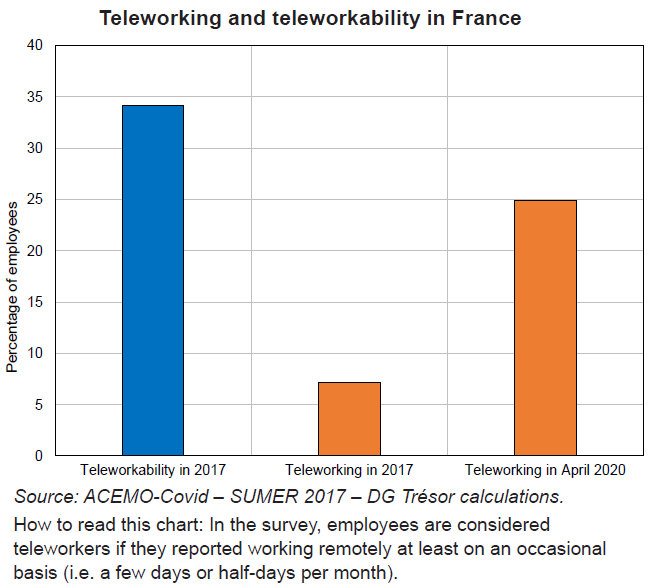How Effective Was Remote Working for Managing the COVID-19 Pandemic?
During the health crisis, telework had the dual purpose of preserving activity in companies and protecting the French by limiting contact and mobility. The data available in 2020 and 2021 confirm that regions with more teleworkable jobs made less use of partial activity during the lockdowns and that mobility outside the lockdowns increased less, resulting in less epidemic activity.
In 2020 and 2021, teleworking was an important part of the French government’s public health policy toolkit. Though just a small minority of French employees worked remotely before the COVID-19 pandemic, nearly one in four employees did so during the first lockdown, while one in five teleworked during the second lockdown through to June 2021 (see chart below).
Teleworking was intended to achieve two goals: mitigate the spread of the epidemic by reducing mobility and employees’ contact with others, and maintain economic activity.
To estimate teleworking’s effectiveness in achieving these two goals, we compare changes in mobility indicators, epidemiological variables and short-time work using rates at the end of lockdown periods from region to region and between economic sectors with different probabilities of teleworking, calculated by estimating the share of teleworkable jobs. All else being equal, we expect the epidemic rebound to occur at a slower pace in regions and among economic sectors where it is easier to work remotely.
According to our findings, teleworkability is correlated with preventing COVID-19 infections and reducing costs related to short-time work schemes. If the proportion of teleworkable jobs had been 10 percentage points higher, mobility would have increased less than what was observed at the end of the lockdowns (by –32 percentage points on average, with the mobility index set at a base value of 100 in early January 2020), and excess mortality when compared with the 2018-2019 period would have risen less (by –4 percentage points). During the lockdowns, the proportion of employees under short-time work schemes would have been 1 percentage point lower than what was observed.
